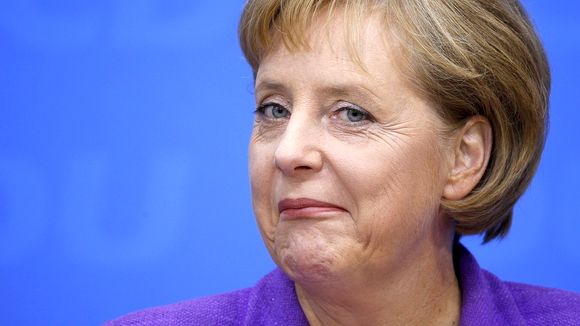Hungary – For several weeks now, the pro-government daily Magyar Nemzet has been opening its columns every Monday to the head of the Hungarian Central Bank (Magyar Nemzeti Bank – MNB), György Matolcsy, who comments on the Hungarian, European and international economic situation. The thoughts of a man with an atypical background within the government apparatus, and known for his relative freedom of tone, are not without interest.
The “inflation budget”
According to the director of the MNB, the adoption of a 5.9% deficit budget for the year 2022 by the Hungarian parliament is a mistake and will foster inflation in a context where the risk of imported inflation is growing fast, with the overwhelming majority of other European countries and the US also having made the choice to continue their slide down the slope (which has become very steep since March 2020) of monetary expansion and budget deficit.
Matolcsy is opposed to this budget because, in his opinion, Hungary’s recovery has already taken place, making it unnecessary and dangerous to increase the deficit. And he does not hesitate to mention possible financial attacks on Hungary. The head of the central bank is thus at odds with the finance minister, Mihály Varga, who fully supports the deficit budget, although he used to be even more supportive of financial discipline than Matolcsy. The Hungarian central banker even goes so far as to dispute Varga’s exclusive competence in economic policy, and explains that he prefers to see monetary policy rather than the state budget as the main tool of economic policy.

The MNB director cannot ignore the fact that the vote on the budget comes in a tense political context for the Hungarian government, and that the election year of 2022 will be of decisive importance for the ruling coalition (although it should be noted that no major budgetary changes had taken place before the 2014 and 2018 elections). While it is true that many of the projects funded by the 2022 budget will not begin until after the election,
there is little doubt the government would have exposed itself to political attack by passing an austere budget, which will likely happen just after the election, regardless of its outcome.
Apart from this domestic political aspect, why has the government chosen to continue to increase the budget deficit? Two hypotheses emerge, although they actually stem from the same issue. At best, bearing in mind the potential drop in EU funds handed to Hungary, the deficit should make it possible to pay the price of policies put in place in the face of the previous waves of the Covid pandemic – which, let us remember, consisted of alleviating (monetarily and budgetarily, and therefore increasingly fictitiously) the effects of the purging of certain economic sectors. At worst, this deficit was passed so as to continue riding the Covid wave after the summer holidays without having to pay the political price of amending the spring budget in the autumn (a potentially high price, because austerity is associated with the names of Gyula Horn, Péter Medgyessy, Ferenc Gyurcsány and Gordon Bajnai, all former left-wing prime ministers).
In fact, both hypotheses could be true if we see the budget deficit as a response to what Matolcsy calls “international attacks”.
By using this expression, is the MNB director speaking not only of mood swings on the financial markets, but also of an atmosphere in the EU in favour of “restrictive measures”, which the Hungarian opposition is constantly calling for?
It was to mitigate this threat that György Matolcsy began a cycle of interest rate hikes designed to curb rampant inflation – as inflation, in the end, always results from subsidising expenses that yield no return with money that does not exist (Jacques Rueff), a description which corresponds well to the economic and monetary response to Covid.
Hungary’s leaders are well aware that the fall in the value of the currency is the most concrete and sensitive part of the Covid pandemic, and as such is a political time bomb which, if it goes off before the April 2022 election, may sweep away the government.
Only time will tell to what extent, if any, the Hungarian Central Bank and the government have succeeded in defusing this bomb with the use of monetary and fiscal policy tools. At present, inflation forecasts – which always have to be revised upwards because of the widespread international practice of massaging the baskets that form the price index – are not encouraging, but they do not yet appear to be setting the stage for serious policy consequences for the government, and will probably remain bearable if quarterly growth remains unchanged at an annual rate of between 3% and 5%. However, such growth could become out of reach in the event of new lockdown measures in the autumn.
Matolcsy notes that Hungary is one of the few countries that have recently chosen to start a cycle of rate hikes. According to him, this is proof that Hungary still has sovereign levers that eurozone countries cannot use.
The “Euro Trap”
The director of the MNB is implacable on the issue of the euro. For him, the single currency, after 20 years of existence, is a considerable failure and a source of major loss for the “southern countries” of the eurozone (Spain, Portugal, Italy, Greece and France). Only Germany and the Netherlands have benefited from the introduction of the euro, which, let us remember, simply amounts to
the introduction of a fixed exchange rate between countries with structurally divergent economies. That, in the absence of political convergence and centralisation of budgets, will never go beyond the stage of monetary and economic absurdity.
Without dwelling too much on this, Matolcsy mentions the Hungarian opposition’s passion for the euro. Indeed, the Momentum party has consistently argued in favour of Hungary joining the eurozone if the opposition wins in spring 2022. Little explanation is given by this pro-Brussels party of the economic and monetary relevance of such a project, which is linked more to a psychological and political approach than a rational economic choice.
Being mainly the party of Budapest’s Woke youth, Momentum wants above all to give the impression that the continued existence of the forint in 2021 shows that Hungary is lagging behind Western Europe, and promotes the idea that the forint is a barrier to progress or even an object of shame, giving rise to an inferiority complex in the face of all those more advanced Europeans who have the privilege of using the euro in their daily lives.
That these aspects are a reality in the most Europhile fringe of the Hungarian population is undeniable, and this fringe would probably have nothing against the idea of Hungary being ruled directly and without limitations from a foreign capital, as it seems to them that their small country would then be better off than in the current context of the (very) limited sovereignty still in the hands of Budapest. In the context of a total absence of national sovereignty, the euro could be justified. However, it is not certain that the aforementioned fringe of the electorate is aware of the principles ruling monetary economics.
György Matolcsy argues for a split of the eurozone into two, which would give monetary policy tools to the southern countries of the zone, allowing them to return to a fiscal, industrial and social policy that matches their economic model.
Such a split would be made possible by the digitisation of the currency, which would facilitate the introduction of two currencies and would be a condition for economic success in the coming decade, or would at least be a choice that could curb the cycle of economic failure for the southern countries of the eurozone.
That cycle has been continuing since the introduction of the euro, and has already cost Italy €4,300 billion and France €3,600 billion, while benefiting the German economy and, by extension, the V4 countries, as they have become more important partners for Berlin than Southern Europe. Matolcsy notes that the crisis of 2008, and more broadly of the last twenty years, was overcome with less difficulty by countries outside the eurozone: the Swedes (the only EU country not to have enforced any lockdown and not to have “monetised” Covid) and the Danes have had less difficulty than the Finns, and the Poles, Czechs and Hungarians have fared better than the Spanish and Greeks.
The head of Hungary’s central bank goes even further, saying that Germany and the Netherlands would have done better still without the single currency, which prevents the other countries in the zone from conducting an autonomous monetary policy, and therefore from having healthier economies.
This point may be subject to debate: is it not precisely the collapse of Southern Europe and its placement under monetary supervision that has allowed the Northern zone to maintain its industry?
At first glance, the desire to restore monetary consistency is a laudable thing. Explaining the problems of southern European countries by the introduction of the euro makes sense. But in the context of the green, digital and inclusive economic projects the EU institutions have for their citizens, is it not anachronistic to talk about an industrial policy facilitated by monetary instruments? This distension creates the potential for a devastating economic and financial shock.
“The probability of a new deep financial crisis in the world economy is growing”
According to György Matolcsy, the question is not whether a new financial crisis will occur, but when and how it will occur, as the “new thirty-year war” that began in 2001 is entering a critical phase due to the technological revolutions that are impacting the financial, energy and military sectors, as well as those of data and food.
It is difficult to predict the magnitude of the coming shock, but for the time being there is no concrete answer to the problem of the existence of a huge money supply compared to what is produced.
Reading the European Commission’s documents and taking stock of the Covid-related recessions of the first lockdowns (a drop of 15 points, meaning in fact 30, given that private sector revenues finance the public sector, which makes up about half of the EU economies), one can easily come to the conclusion that
this new green and inclusive economy intends to do without 25% to 30% of pre-Covid production, while maintaining money supply levels that are ludicrous in relation to this drop.
Such a contradiction is simply unsustainable in the medium and long term, and a crash is inevitable if this new economic paradigm is not accompanied by one or more profound technological innovations likely to lead to a real revival of production and real remuneration for it, things that the electric scooter and the electric car are highly unlikely to bring.
Matolcsy keeps repeating in his weekly columns that Hungary – and this probably also applies to the other V4 countries – is at a point where it must catch up economically and technologically with its Western partners. Otherwise, it risks falling into what economists call the “middle income trap”, a situation in which a country gets stuck at a certain level of economic development.
One could respond to the head of the Hungarian Central Bank that it is not just Central Europe that is in danger of falling into this trap, but all the countries – in this case the NATO countries – that try to force through this new economy, which, in its infancy, already resembles
the most grotesque moments of the Soviet economy, making an art of paying workers in worthless currency to produce nothing.
The famous economic catch-up with Western Europe, which the Hungarian and Central European elites have been advocating for decades, is therefore no longer simply an illusion, but becomes a contradiction in terms when the economies to be caught up with risk quickly falling behind in the years to come.
Being highly dependent and lacking capital with strong potential for innovation and growth, Hungary does not have any objective elements in the short and medium term that would allow it to escape the prospect of a drop in performance. This is reflected in Matolcsy’s concerns about meeting the challenge of the next decade. He believes that the solution lies in competitiveness, reducing the burden of government, innovation and digitalisation. He takes as examples countries like Singapore and South Korea (economic “miracles” about which much could be said), bearing in mind that the potential for development in Western Europe is coming to an end.
He dreams of a Hungary and Central Europe at the cutting edge of innovation and technology, but is rather evasive about the conditions that would allow this goal to be achieved – notably in terms of questioning an economic dependence that is not new, since it dates back to the second half of the 19th century, meaning that it is reinforced by a cultural inertia which cannot be overcome easily.





